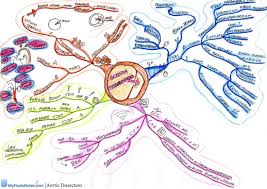
Pathophysiology Mind Map
Order Instructions:
As an advanced practice nurse, you will examine patients presenting with a variety of disorders. You must, therefore, understand how the body normally functions so that you can identify when it is reacting to changes. Often, when changes occur in body systems, the body reacts with compensatory mechanisms. These compensatory mechanisms, such as adaptive responses, might be signs and symptoms of alterations or underlying disorders. In the clinical setting, you use these responses, along with other patient factors, to lead you to a diagnosis.
Consider the following scenarios:
Scenario 1:
Jennifer is a 2-year-old female who presents with her mother. Mom is concerned because Jennifer has been “running a temperature” for the last 3 days. Mom says that Jennifer is usually healthy and has no significant medical history. She was in her usual state of good health until 3 days ago when she started to get fussy, would not eat her breakfast, and would not sit still for her favorite television cartoon. Since then she has had a fever off and on, anywhere between 101oF and today’s high of 103.2oF. Mom has been giving her ibuprofen, but when the fever went up to 103.2oF today, she felt that she should come in for evaluation. A physical examination reveals a height and weight appropriate 2-year-old female who appears acutely unwell. Her skin is hot and dry. The tympanic membranes are slightly reddened on the periphery, but otherwise normal in appearance. The throat is erythematous with 4+ tonsils and diffuse exudates. Anterior cervical nodes are readily palpable and clearly tender to touch on the left side. The child indicates that her throat hurts “a lot” and it is painful to swallow. Vital signs reveal a temperature of 102.8oF, a pulse of 128 beats per minute, and a respiratory rate of 24 beats per minute.
Scenario 2:
Jack is a 27-year-old male who presents with redness and irritation of his hands. He reports that he has never had a problem like this before, but about 2 weeks ago he noticed that both his hands seemed to be really red and flaky. He denies any discomfort, stating that sometimes they feel “a little bit hot,” but otherwise they feel fine. He does not understand why they are so red. His wife told him that he might have an allergy and he should get some steroid cream. Jack has no known allergies and no significant medical history except for recurrent ear infections as a child. He denies any traumatic injury or known exposure to irritants. He is a maintenance engineer in a newspaper building and admits that he often works with abrasive solvents and chemicals. Normally he wears protective gloves, but lately they seem to be in short supply so sometimes he does not use them. He has exposed his hands to some of these cleaning fluids, but says that it never hurt and he always washed his hands when he was finished.
Scenario 3:
Martha is a 65-year-old woman who recently retired from her job as an administrative assistant at a local hospital. Her medical history is significant for hypertension, which has been controlled for years with hydrochlorothiazide. She reports that lately she is having a lot of trouble sleeping, she occasionally feels like she has a “racing heartbeat,” and she is losing her appetite. She emphasizes that she is not hungry like she used to be. The only significant change that has occurred lately in her life is that her 87-year-old mother moved into her home a few years ago. Mom had always been healthy, but she fell down a flight of stairs and broke her hip. Her recovery was a difficult one, as she has lost a lot of mobility and independence and needs to rely on her daughter for assistance with activities of daily living. Martha says it is not the retirement she dreamed about, but she is an only child and is happy to care for her mother. Mom wakes up early in the morning, likes to bathe every day, and has always eaten 5 small meals daily. Martha has to put a lot of time into caring for her mother, so it is almost a “blessing” that Martha is sleeping and eating less. She is worried about her own health though and wants to know why, at her age, she suddenly needs less sleep.
To prepare:
•Review the three scenarios, as well as Chapter 6 in the Huether and McCance text.
•Identify the pathophysiology of the disorders presented in the scenarios, including their associated alterations. Consider the adaptive responses to the alterations.
•Review the “Mind Maps—Dementia, Endocarditis, and Gastro-oesophageal Reflux Disease (GERD)” media in this week’s Learning Resources. Then select one of the disorders you identified from the scenarios. Use the examples in the media as a guide to construct a mind map for the disorder you selected. Consider the epidemiology, pathophysiology, risk factors, clinical presentation, and diagnosis of the disorder, as well as any adaptive responses to alterations.
To complete:
Write a 2- to 3-page paper that addresses the following:
•Explain the pathophysiology of the disorders depicted in the scenarios, including their associated alterations. Be sure to describe the patients’ adaptive responses to the alterations.
•Construct a mind map of your selected disorder. Include the epidemiology, pathophysiology, risk factors, clinical presentation, and diagnosis of the disorder, as well as any adaptive responses to alterations.
This Assignment is due by Day 7 of Week 2.
SAMPLE ANSWER
Pathophysiology Mind Map
The body employs certain mechanisms to overcome pathological conditions. In some situations, the mechanisms that the body applies end up causing disease. The body applies mechanisms that counter the effects of pathological processes. Patients may realize that they are sick after observing the outcomes of the response processes. Nurses and other clinical care providers also use the signs in their diagnoses for diseases. It is often possible to determine pathological situations depending on the mechanisms that the body employs as response. Normal physiological processes in the body occur in a certain manner, and illnesses alter their pattern. The changes observed under disease are important in diagnoses, especially when coupled with patient history and risk factors.
The disease condition in Jenifer’s case presents with hypertension, fever, restlessness, swollen lymph nodes and sore throat. Jenifer also has erythematous on her throat, and she experiences swollen lymph nodes. Fever, high pulse and heart rate are common signs of a wide variety of diseases (“Fever, headache, high rate of breathing, and rapid pulse”, 2015). In patients of hypertension, the rate at which the blood flows from the heart to other organs is elevated. The pathological condition subjects the heart and blood vessels to straining. Under normal situations, pediatrics of Jennifer’s age exhibit a heartbeat of 80 to 120 beats in a minute (Wedro, 2013, Pg. 1). Under hypertensive situations, the heart has to pump blood faster and patients can record a heartbeat as high as 128 beats in a minute as seen with Jennifer. Hypertension causes a number of alterations on the normal body functioning. Other body processes may have to happen at a faster rate than normal. Too much blood passing through vessels within a short while could, for instance, require vessels to offer a larger volume to allow for flow. The body adapts to hypertension by making changes such as vasodilation. When the blood vessels are dilated, they allow for more blood to pass through. Too much blood in the vessels causes reddening of body surfaces. In Jennifer’s case, surface that redden include tympanic membranes. Drying of the skin could also be a mechanism that the body employs to lose excessive heat. Jenifer has fever, and the drying of her skin allows her to lose water and heat at the same time. However, the condition could also depict more serious health conditions such as thyroid insufficiency (Mirror.co.uk, 2012).
The pathological condition in Jack’s case presents with reddening of the hands. Blood capillaries in the patients are likely to be softened. When too soft, the vessels may dilate easily to contain lager volumes of blood. The corrosive agents that Jack works with are likely to have caused softening of the capillary walls. When the capillary walls are too soft, they may rupture when subjected to pressure. Body alterations that occur with dilated blood capillaries include higher than normal blood flow to the affected region. Dilated vessels have large volumes and decreased pressure. To match the decreased blood pressure, the body adapts by allowing more blood to flow into the affected vessels. The occurrence causes surfaces to appear red, but patients may not necessarily experience pain as in jack’s case. Hardening of capillary walls could reduce their tendency to rupture. Abnormal reddening of hands may also imply underlying blood disorders. In most cases, reddening may occur with easy bruising, suggesting problems such as blood clotting insufficiency. Hormonal imbalances that result with liver damages could also cause reddening of the palms (Mirror.co.uk, 2012). There are also other conditions that could cause reddening of the hands. While the condition may seem petty as there is no pain associated with it, it could be a symptom of serious health abnormalities. Other disease situations that could cause reddening of the hands include thyroid diseases and rheumatoid arthritis (Mirror.co.uk, 2012).
Martha’s disease presents with abnormalities such as sleep apnea, elevated heart rate, as well as loss of appetite. Her history suggests high chances of hypertension being the underlying disease condition. Too many commitments, as seen in caring for an elderly in Martha’s case, could cause the disruption of sleep and eating behavior. Loss of sleep could cause depression in patients, which may in turn lead to decreased appetite for food as in Martha’s case. To adapt to loss of appetite, the body consumes less energy and patients may become less active. Adaptations for elevated heart rate include vasodilation. Patients with sleep apnea experience inactivity and depression as a response mechanism. On the other hand, depression could be that cause of sleep apnea (Rubin, 2012).
Hypertension Mind Map
| Physiological and pathological conditions
old age, obesity, diabetes |
||
| Risk factors | ||
| Environmental factors
Fatty diets High consumption of low density cholesterol, trauma, too heavy physical activities |
| epidemiology |
| Signs and symptoms:
High pulse rate, high heartbeat, loss of sleep |
| pathophysiology | ||||
| hypertension | Adaptive responses:
Vasodilation, increased rate of metabolic processes |
|||
| diagnoses |
| Patient history:
Previous diagnoses |
| Clinical presentations:
Increased heart rate, high pulse rate, fever, restlessness,
|
References
Fever, headache, high rate of breathing, and rapid pulse. (2015). WebMD. Retrieved from http://symptomchecker.webmd.com/multiple-symptoms?symptoms=fever|headache|rapid-breathing|rapid-heart-rate-%28pulse%29&symptomids=102|115|269|184&locations=2|2|14|14
Mirror.co.uk (2012). Your health is in your hands. Retrieved from http://www.mirror.co.uk/lifestyle/health/how-changes-to-hands-can-point-940103
Rubin, R. (2012). WebMD. Retrieved from http://www.webmd.com/sleep-disorders/sleep-apnea/news/20120330/sleep-apnea-linked-depression
Wedro, B. (2014). Medicine health. Retrieved from http://www.emedicinehealth.com/pediatric_vital_signs/article_em.htm
We can write this or a similar paper for you! Simply fill the order form!












